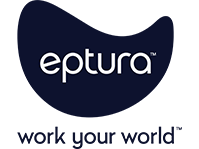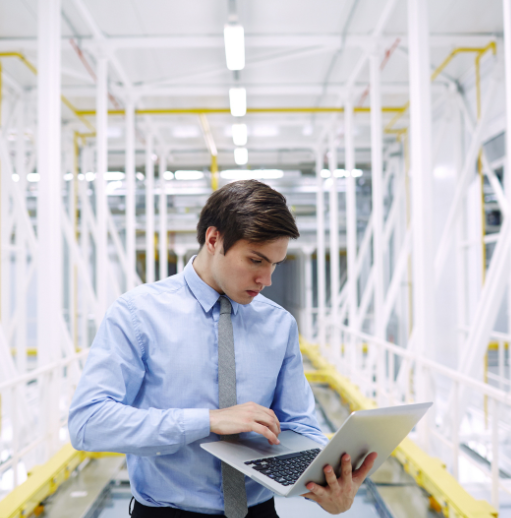
More people are at the office more often, according to Eptura’s 2025 Workplace Index report. Desk bookings from our 25 million users grew 33% globally, and over the past three years, visitors per location have nearly doubled. Those numbers are set to grow, with 34% of organizations planning to bring even more employees back to the office over the next 12 months. It’s the perfect time to explore new ways of thinking about the places where we work.
Welcome to our monthly look beyond the headlines to help busy industry professionals stay on top of facility management (FM) trends.
Connections between the study of human geography and the modern workplace
Deepening our understanding of the modern office can start with a broader look at how people create and interact in groups. In Workplace Innovator episode 344 “‘Support That Emotional Intelligence’ – Understanding Human Geography and the Power of Place,” Tica Masuka, global workplace strategy director at Spaceful, expands the conversation on the ideal workplace to include connections between an environment and the human condition.
Masuka’s background is in human geography, a branch of geography focused on the study of human activities and their interactions with the environment. It includes topics like population dynamics, urban and rural development, cultural practices, economic activities, and social structures.
Direct connections between human geography and the workplace include:
- Workforce distribution: Understanding the geographic distribution of the workforce can help companies make informed decisions about where to locate offices, factories, or retail stores, so they can optimize access to labor markets and reduce costs.
- Talent management: Human geography can inform strategies for attracting and retaining talent. Understanding the cultural and social dynamics of different regions can help companies tailor their recruitment and retention efforts to local contexts.
- Remote work and telecommuting: With the rise of remote work, human geography is increasingly relevant in understanding the spatial patterns of where people live and work. It can help companies design effective remote work policies and support systems.
An important principle in human geography is that people, cultures, economies, and societies shape and are shaped by the places they inhabit.
“There is this interrelation happening between people and place where people influence place, but place also influences people, and we need to understand it both ways in order to create great workplace experiences,” Masuka explains.
She shares a recent real-world example: “One thing I observed the other day, which is a very small thing, is that there was this coffee cup that was in the reception area. It was an empty coffee cup, and that empty coffee cup stayed there for the whole day, and it made me think all right, so there is a receptionist here. Multiple people would have seen the empty coffee cup, but no one felt compelled to clean it up, right? What does that say about their relationship to their workplace?”
That’s an interesting question, and it leads to another. How can companies more systematically generate and make the most of “human condition” observations?
How to access insights from the social sciences
According to David Dewane, chief experience officer for physical space at Genient, organizations need to prioritize projects that help them understand their teams.
In “’Understand the Reality’ – Shaping Experiences in the Workplace across Space, People, and Technology,” he encourages companies to “try set up a budget to get some researchers involved that can help you actually understand the reality of your teams in the workplace right now. Otherwise, you’re just at risk of wasting money and time and losing talent and falling by.”
He suggests a more balanced approach to improving the workplace. “They’re just doing it on all the technology projects that they’re working on. They’re just not doing it on the space projects yet. And I think that that’s where you’ve got to go.”
According to Dewane, companies should bring in anthropologists if they want to know what’s truly happening in the office. “They can tell you what’s really going on, that’s the most important thing,” he says. It’s only when armed with these insights that companies can move to the second step, which is bringing in a designer to create a space that makes employees happier and more productive.
Can open concepts create open communication?
While physical space should reflect and support how teams work, it can also be a powerful way to align employees around a shared goal.
In “’Bring All Your Ideas’ – Integrating Workplace Cultures & Engaging Employee Experiences,” Lisa Mitchell-Kastner, head of people & culture and chief human resources officer at ISS Americas, explains the connections between company values and spaces.
“The purpose of the building, sometimes buildings have multiple functions, but they are there to drive a purpose and a result, and people can get aligned around that mission, and that purpose, and all of that creates the culture, the ways of work,” she says.
It’s a concept that makes intuitive sense. An open floor plan, for example, can foster a culture of collaboration and transparency, making it easier for team members to communicate and share ideas. Providing private spaces for focused work or personal reflection can demonstrate a commitment to employee well-being and work-life balance. Flexible workspaces, such as modular furniture and adjustable workstations, can show a company’s adaptability and innovation, allowing the space to evolve with changing needs and projects. By thoughtfully designing the layout to support both collaboration and individual productivity, a company can create an environment that aligns with its values and supports overall performance.
It’s not just where you put the desks. It’s also what you put on the walls.
The art and decor in a company’s space can powerfully communicate its values and create a meaningful and inspiring environment. For example, featuring pieces by local artists or those from underrepresented communities can show a dedication to supporting the local arts scene and promoting inclusivity. Incorporating elements that align with the company’s brand, such as custom murals or sculptures that reflect the company’s mission, can reinforce brand identity and create a cohesive and engaging atmosphere.
Technology always has a role in shaping the modern workplace
Technology in the workplace creates new expectations and opportunities. Mitchell-Kastner wants workplace leaders to be aware of the ways technology from outside the office is now shaping employee expectations of their in-office experience. If people are used to seamless experiences in many other aspects of their lives, the assumption is the workplace will be the same. “If I can order DoorDash or Uber Eats on my personal device, do I have that same ability in the workplace when I bring my computer from home? We all love the flexibility of working wherever and whenever?”
In “’Honing our Ability to Listen’ – Facility Management Leadership and the Evolution of Workplace Experience,” Christine Mueller, vice president and director of office services operations & engineering at Capital Group, explores how automation elevates the importance of empathy.
“We can use AI to help us with some of the day-to-day tasks and reporting, which could save us time to then be spending more time with those we support and talking with them and learning what they need to kind of move forward.”
Stay on top of the trends in intelligent worktech and facility management
Workplace and facility management are constantly evolving with new technologies, regulations, and best practices, so industry professionals need to stay on top of the trends.
For more videos, podcasts, and webinars to keep you updated on the latest trends, visit Eptura’s resource page.




